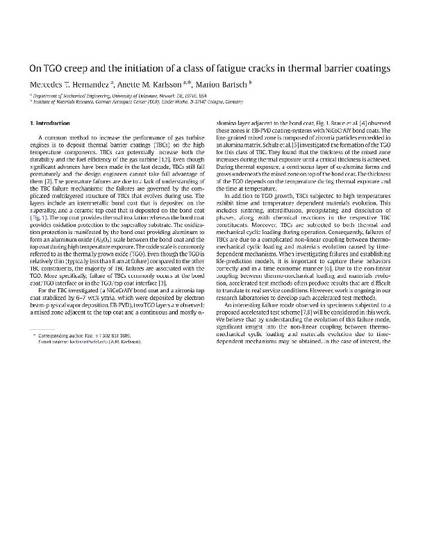
The evolution of fatigue cracks observed in thermal barrier coatings (TBCs) subjected to an accelerated test scheme is investigated via numerical simulations. The TBC system consists of a NiCoCrAlY bond coat and partially yttria stabilized zirconia top coat with a thermally grown oxide (TGO) between these two coatings. The cracks of interest evolve in the bond coat parallel and near the interface with the TGO during thermo-mechanical fatigue testing. In their final stage, the cracks lead to partial spallation of the TBC. This study focuses on why the cracks open to their characteristic shape. To this end, finite element simulations are utilized. The crack surface separation is monitored for a range of material properties and oxidation rates. The simulations show that the inelastic response of the bond coat and the oxidation rate of the TGO govern the crack surface separation. Most interestingly, permanent separation of the crack surfaces is caused by a structural ratcheting in the vicinity of the crack.
